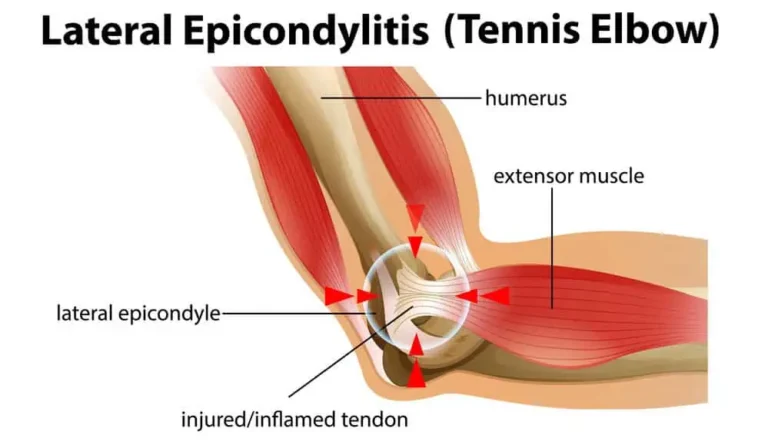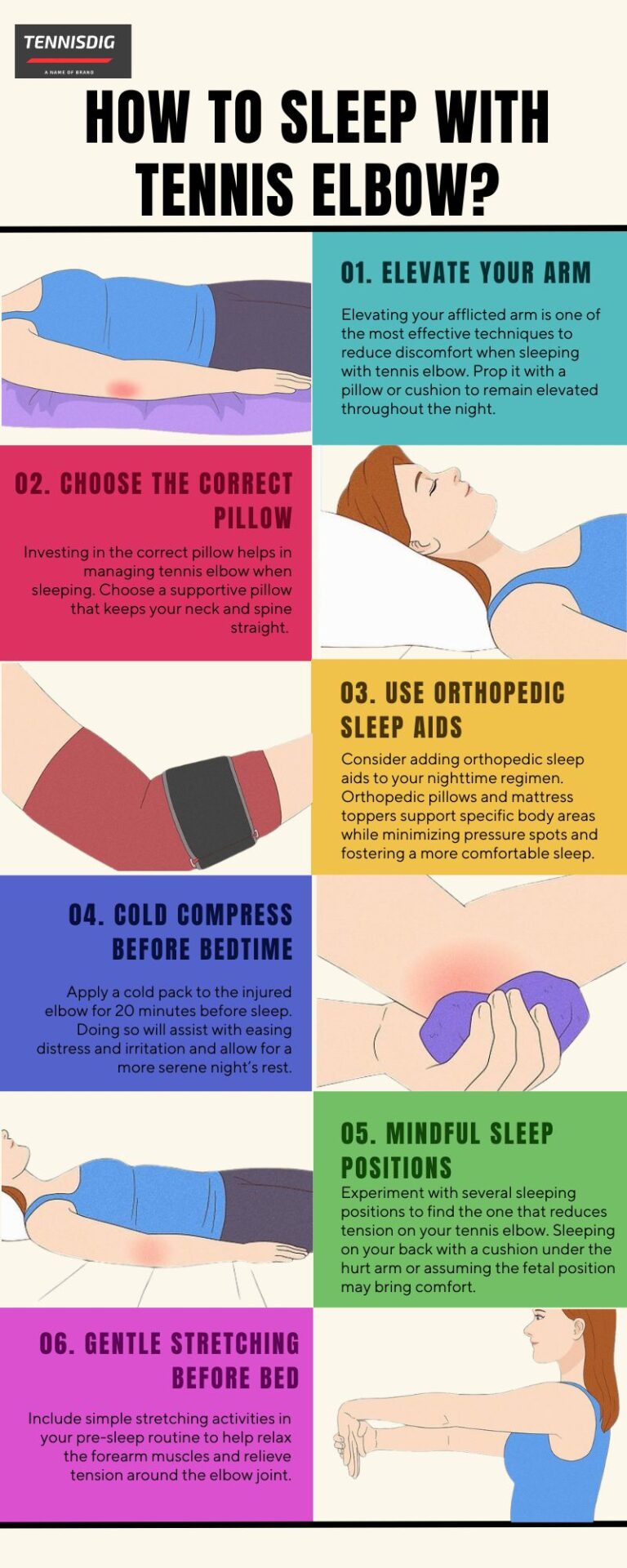Lateral epicondylitis, or tennis elbow, is characterized by forearm inflammation and external discomfort in your entire arm. It can disrupt numerous parts of your routine, including rest hours. With a couple of lifestyle changes, you can learn how to sleep with tennis elbow to alleviate your injury and pain sensations.
What is a Tennis Elbow?
Before discussing how to sleep with tennis elbow, you should comprehend the nature of temporarily straining conditions.
Pain and discomfort around the outer elbow are common symptoms of lateral epicondylitis. It is often caused by repetitive action and overuse of the forearm muscles. The discomfort worsens during tasks requiring gripping or lifting, making sleep especially difficult for people affected.

How to Sleep with Tennis Elbow?
The following steps provide constant relief to your forearm discomfort.

1: Elevate Your Arm
Elevating your afflicted arm is one of the most effective techniques to reduce discomfort when sleeping with tennis elbow. Prop it with a pillow or cushion to remain elevated throughout the night. This posture reduces swelling and relieves pressure on the inflamed region, resulting in a more pleasant sleep.
2: Choose the Correct Pillow
Investing in the correct pillow helps in managing tennis elbow when sleeping. Choose a supportive pillow that keeps your neck and spine straight. To maintain a comfortable angle, patients with tennis elbow should lay an extra cushion beneath their afflicted arm. Experiment with various cushion sizes and hardness levels to discover the best fit for your requirements.
3: Use Orthopedic Sleep Aids
Consider adding orthopedic sleep aids to your nighttime regimen. Orthopedic pillows and mattress toppers support specific body areas while minimizing pressure spots and fostering a more comfortable sleep.
While considering these possibilities, look for solutions that match your personal comfort preferences and adequately address the demands of your tennis elbow.
4: Cold Compress Before Bedtime
Apply a cold pack to the injured elbow for 20 minutes before sleep. Doing so will assist with easing distress and irritation and allow for a more serene night’s rest.
5: Mindful Sleep Positions
Experiment with several sleeping positions to find the one that reduces tension on your tennis elbow. Sleeping on your back with a cushion under the hurt arm or assuming the fetal position may bring comfort.
Avoid putting too much pressure on the elbow joint, and strive for a natural and comfortable position.
6: Gentle Stretching Before Bed
Include simple stretching activities in your pre-sleep routine to help relax the forearm muscles and relieve tension around the elbow joint.
Perform gentle and deliberate stretches, concentrating on the afflicted arm. Consult with a healthcare practitioner or physical therapist to confirm that the stretches you select suit your situation.
The Bottom Line
Knowing how to sleep with tennis elbow requires you to make conscious changes and practice mindfulness. Elevating your arm, selecting the correct pillow, embracing orthopedic sleep aids, using a cold compress, adopting attentive sleep postures, and including light stretching into your routine can all help you achieve peaceful sleep.
Remember, consistency is essential. Speaking with a healthcare expert can give tailored advice on managing tennis elbow discomfort while sleeping. Sweet dreams await when you use these ways to improve your sleep quality and general well-being!

